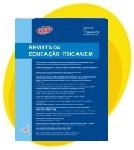Traditional models of fatigue and physical performance
Abstract
The origin of fatigue has been the focus of studies involved in sports performance, due to the necessity to clarify the mechanistic bases for the reduced capacity to perform considerable effort intensities. According to the traditional conception of fatigue, mechanisms may encompass peripheral and central sites of fatigue. Peripheral fatigue is understood as events related to an inefficient tissue oxygen delivery, metabolic accumulation, muscular acidosis and muscle substrate depletion. In contrast, the central fatigue is mostly related to events in the central nervous system (CNS) that may involve neurotransmitters changes, altered metabolic profile and elevated temperature. Therefore, the current review aimed to discuss the peripheral and central mechanisms of fatigue, thus driving interpretations of the phenomenon.
Downloads
Metrics
• Authors retain the copyright and full publishing rights without restrictions.

This work is licensed under a Creative Commons Attribution 4.0 International License.













_1502.jpg)











